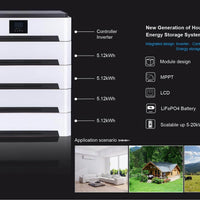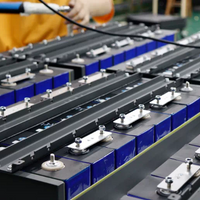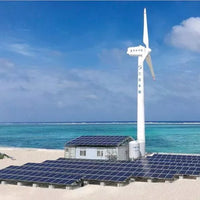Background information
- Chile has the highest electricity prices in Latin America.
- The 2018 national average electricity price is 0.19USD/KWH
- Chile is the host country of the 2019 Global Climate Conference (an event under the Paris Agreement), and the international influence of the event is highly valued by the President and the energy and environmental authorities.
- The government has set very optimistic new energy targets and related laws: by 2030, 60% of electricity will come from renewable sources (up from about 40% now, mostly from large hydroelectric plants), and more than 90% of new capacity will come from solar and wind.
- As of 2018.7, * Chile's total installed power capacity is 23.9GW, with PV and wind energy accounting for 16.5% (most of which are still in the construction and commissioning stage, with actual generating capacity accounting for less than 7%).
- Although there is no direct subsidy policy and incentive mechanism for energy storage in Chile, with the rapid increase in the proportion of renewable energy, the popularization of energy storage application on the grid side is bound to be put on the agenda, and the upgrading of the old power grid is also driving new energy storage demand. Assuming that 20% of newly installed renewable energy capacity and 10% of installed capacity will be equipped with energy storage, Chile's future grid-side energy storage market will be measured in GWH.
- There are various profit mechanisms for energy storage on the grid side, and the profitability is greatly affected by policies. This paper mainly analyzes the economic benefits of commercial and industrial energy storage applications based on market mechanisms without policy subsidies.
Economic benefit analysis of energy storage application
The main USES of industrial and commercial energy storage are: peak filling, off-grid energy storage
Here are several possible ways to analyze the economic benefits of energy storage applications:
The kilowatt-hour bill (or peak-valley price difference) is directly compared with the kilowatt-hour cost of an energy storage system.
Calculation model: difference in electricity or peak-valley price/kWh of energy storage system = economic benefit ratio of the energy storage system
When the above results are greater than 1, it can be judged that the KWH economic benefit of the energy storage application is positive.
A) Electricity charge: approximately 0.19USD/KWH
Note: Due to the wide variety of tariff charging methods for industry and commerce, the average electricity price in Chile in 2018 is temporarily taken as the reference: 0.19USD /KWH
B) The cost per KWH of each charge and discharge cycle of the energy storage system: about 0.125USD/KWH
(Reference: the total cost of the system is 400USD/KWH, including BMS and PCS, 90% oF 4500 cycles under DOD, 60% of the remaining available capacity of EOL, 75% of the median value is taken as the average available capacity of the whole life cycle, and 95% of the charging-discharge efficiency)
Calculation result: 0.19/0.125= 1.52
Conclusion: The economic benefit of the energy storage application is positive.
Note: if you give energy storage system is the charge of electricity from the grid, the model of peak valley price difference should be used instead of electricity, but if it is from other contains KWH cost electricity system (such as solar or wind), can be thought of as in the case of using battery energy storage means that part of the electrical energy will be wasted even without charge, so that part of charging electricity KWH cost when judging energy-storage economic benefits can be ignored.
Application examples:
A commercial and industrial user in the Atacama Desert in northern Chile has a total load of 1000KW (1MW), with a peak load of 8 hours per day, an additional 50% load of 2 hours per day, and 10% load at other times (including night) for 300 days per year. The annual electricity consumption was 3,120,000KWH; Assuming an electricity price of 0.15USD/KWH, the user's annual electricity bill is $468,000.

System plan and cost budget:
Build an off-grid power generation system equipped with 1.8MW PV and 2MWH battery energy storage. Budget details:
Photovoltaic system (including EPC) : 1.2USD/W x 1.8MW = US $2.16 million
Energy storage system (including PCS) : 350USD/KWH x 2000 = US $700,000
The total cost of the system was $2.86 million
Calculation results: system cost 2.86 million/year electricity expense 468,000 = multiplier 6.11
Conclusion:
- If the user USES their capital, it pays for itself in about six years. The remaining system life is 9-14 years with a net return.
- If the user takes out a loan, the loan interest rate is 8% and the cost will be recovered in about 8.5 years and the user will begin to enjoy the return.
- If a third party signs a 15-year PPA agreement with the user, the price is 0.12USD/KWH (20% cheaper than the grid price), the total revenue for 15 years can reach USD 7.02 million (the initial investment is 2.86 million). Such contracts should be attractive to users and investors in the long run, when electricity prices are rising.
By the same token, the economic benefits of home energy storage systems are also very substantial, and our very hot AE series expandable battery storage system can bring you a more colorful life imagination!








0 comments